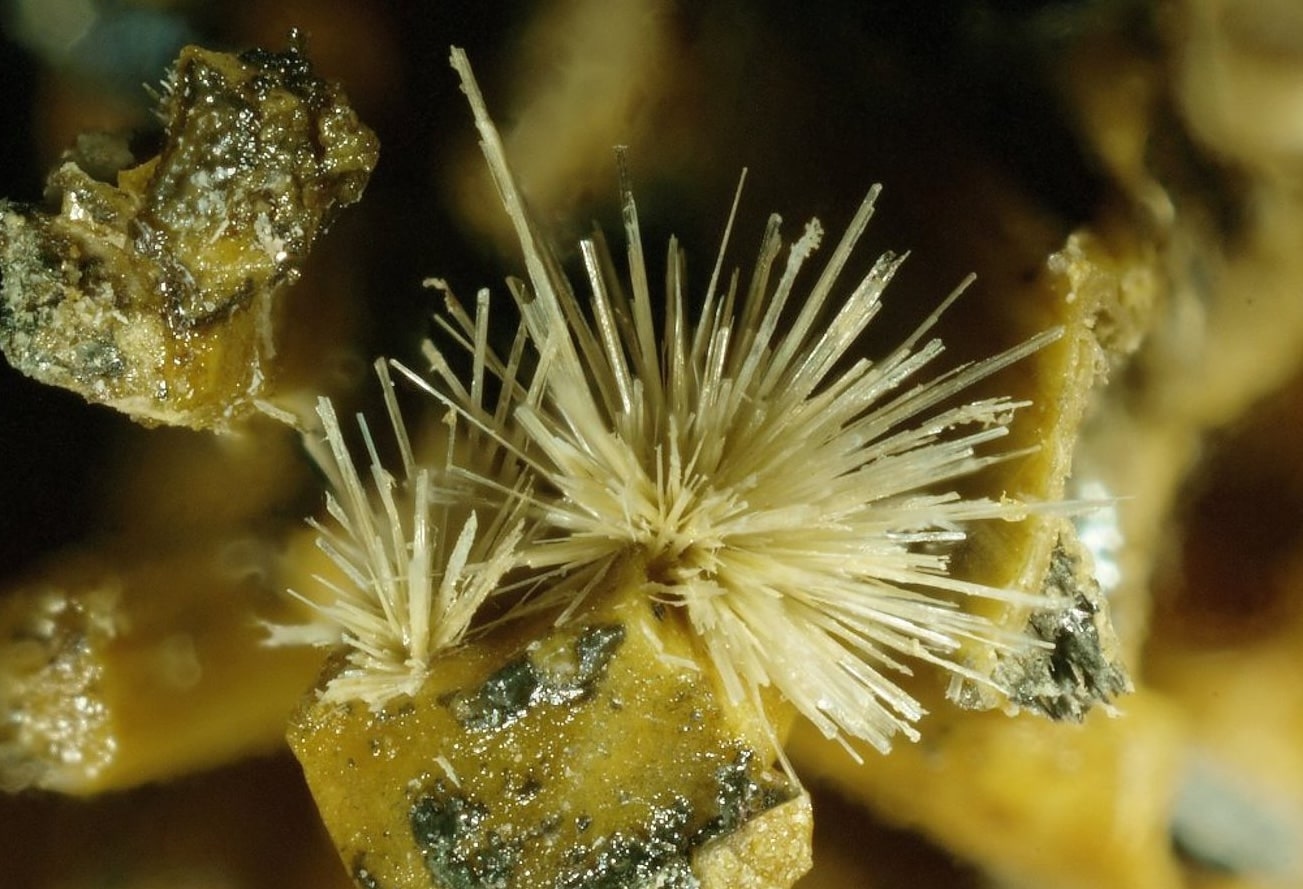
What is cervantite? Cervantite is a rare mineral composed mainly of antimony and oxygen. It typically forms as a secondary mineral through the oxidation of stibnite, another antimony mineral. Found in various parts of the world, cervantite often appears in yellow to brownish hues. Its crystal structure can be quite fascinating, often forming in prismatic or tabular shapes. This mineral is not just a collector's item but also holds significance in industrial applications due to its antimony content. Understanding cervantite can offer insights into geological processes and mineral formation. Ready to learn more? Let's dive into 20 intriguing facts about this unique mineral!
Key Takeaways:
- Cervantite is a rare mineral with unique properties, used in industries like flame retardants and semiconductors. It forms in specific geological settings and can be found in countries like Spain, Australia, Bolivia, and China.
- With a distinctive appearance and interesting properties, cervantite is a valuable source of antimony. It has a sub-metallic luster, fluoresces under ultraviolet light, and is insoluble in water.
What is Cervantite?
Cervantite is a rare mineral that many people might not know about. It has unique properties and an interesting history. Let's dive into some fascinating facts about this mineral.
-
Cervantite is an antimony oxide mineral with the chemical formula Sb3+Sb5+O4.
-
It was first discovered in Cervantes, Spain, which is how it got its name.
-
This mineral typically forms in the oxidation zones of antimony-bearing ore deposits.
-
Cervantite often appears as yellow to orange-yellow crystals, sometimes with a white streak.
-
It has a Mohs hardness of 4 to 5, making it relatively soft compared to other minerals.
Where Can You Find Cervantite?
Cervantite isn't found just anywhere. Its occurrence is limited to specific geological settings. Here are some locations where this mineral can be found.
-
Besides Spain, cervantite has been discovered in countries like Australia, Bolivia, and China.
-
In the United States, cervantite can be found in states such as Nevada and Idaho.
-
The mineral is often associated with other antimony minerals like stibnite and valentinite.
-
It forms as a secondary mineral through the oxidation of primary antimony minerals.
-
Mining for cervantite is usually a byproduct of extracting other antimony ores.
Uses of Cervantite
While cervantite might not be as well-known as gold or silver, it has its own set of uses. Let's explore how this mineral is utilized.
-
Cervantite is primarily used as an ore of antimony, which is a critical element in various industries.
-
Antimony from cervantite is used in flame retardants, batteries, and low-friction metals.
-
The mineral is also used in the production of semiconductors and infrared detectors.
-
In ancient times, antimony compounds were used in cosmetics and medicine.
-
Researchers study cervantite to understand the geochemical processes that form antimony deposits.
Interesting Properties of Cervantite
Cervantite has some unique properties that make it stand out. Here are a few intriguing aspects of this mineral.
-
It has a sub-metallic to earthy luster, giving it a distinctive appearance.
-
Cervantite is often found in acicular (needle-like) or fibrous crystal forms.
-
The mineral can fluoresce under ultraviolet light, showing a greenish-yellow glow.
-
It has a specific gravity of 5.2 to 5.3, making it denser than many common minerals.
-
Cervantite is insoluble in water but can dissolve in hydrochloric acid, showcasing its chemical resilience.
Final Thoughts on Cervantite
Cervantite, a rare antimony oxide mineral, offers a fascinating glimpse into the world of geology. Found in hydrothermal veins and oxidized zones of antimony deposits, it often appears alongside minerals like stibnite and valentinite. Its unique yellow to orange color and crystal structure make it a subject of interest for collectors and researchers alike. Despite its rarity, cervantite plays a crucial role in understanding the geochemical processes involving antimony. Whether you're a geology enthusiast or just curious about minerals, cervantite's intriguing properties and formation processes provide plenty to explore. So next time you come across a mineral collection, keep an eye out for this captivating specimen. It’s a small but significant piece of Earth's geological puzzle.
Frequently Asked Questions
Was this page helpful?
Our commitment to delivering trustworthy and engaging content is at the heart of what we do. Each fact on our site is contributed by real users like you, bringing a wealth of diverse insights and information. To ensure the highest standards of accuracy and reliability, our dedicated editors meticulously review each submission. This process guarantees that the facts we share are not only fascinating but also credible. Trust in our commitment to quality and authenticity as you explore and learn with us.
